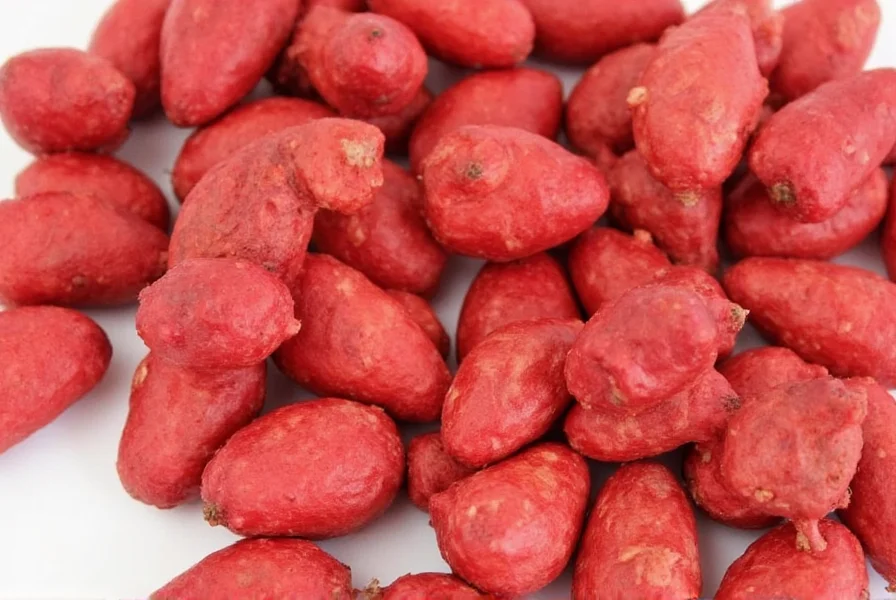When exploring the differences between red ginger and regular ginger, it's essential to understand that both varieties come from the same botanical species but represent different cultivars with distinct characteristics. Red ginger, sometimes called Chinese pink ginger or Hawaiian red ginger, has gained popularity among chefs and home cooks seeking a more nuanced ginger flavor for specific culinary applications.
Understanding Red Ginger Characteristics
Red ginger's most distinctive feature is its coloration. The rhizomes display a subtle pink to reddish tint, particularly at the growing tips, which comes from natural anthocyanin pigments. This natural red ginger color variation doesn't significantly affect the overall flavor but indicates a slightly different chemical composition compared to the standard yellow-fleshed ginger.
The flavor profile of red ginger tends to be milder and slightly sweeter than common ginger, with less of the sharp, fiery heat that characterizes regular ginger. This makes it particularly suitable for dishes where a more delicate ginger presence is desired without overwhelming other flavors.
| Characteristic | Red Ginger | Regular Ginger |
|---|---|---|
| Color | Pinkish-red tips, pale yellow flesh | Yellow-brown skin, bright yellow flesh |
| Flavor intensity | Milder, slightly sweeter | More pungent, sharper heat |
| Texture | Slightly more fibrous | More tender when young |
| Common uses | Asian cuisine, pickling, delicate dishes | General cooking, baking, strong-flavored dishes |
Culinary Applications of Red Ginger
Chefs often prefer red ginger for specific applications where its milder red ginger flavor profile shines. In Japanese cuisine, it's commonly used for gari (pickled ginger) served with sushi because its delicate flavor complements raw fish without overpowering it. The subtle red hue also creates visually appealing pickled ginger with a beautiful pink color.
When cooking with red ginger, consider these applications:
- Asian stir-fries where a less aggressive ginger flavor is desired
- Fish and seafood dishes that benefit from ginger's warmth without intense heat
- Pickling projects where the natural pink hue enhances visual appeal
- Delicate sauces and dressings requiring subtle ginger notes
- Infused oils and vinegars for finishing dishes
For those exploring how to use red ginger in cooking, remember that while it can generally substitute for regular ginger, the flavor difference means you might need to adjust quantities. Because red ginger is milder, you may need slightly more to achieve the same flavor impact as regular ginger.

Nutritional Profile Comparison
Both red and regular ginger share similar nutritional benefits, containing gingerol (the compound responsible for ginger's characteristic flavor and many health properties), but with slight variations in concentration. Red ginger contains additional anthocyanins, which are antioxidants also found in berries and red cabbage.
When examining red ginger nutritional benefits versus regular ginger, research suggests both varieties offer comparable anti-inflammatory and digestive benefits. The primary difference lies in the specific antioxidant profile rather than significant nutritional disparities.
Selecting and Storing Red Ginger
Finding genuine red ginger can be challenging outside of specialty markets. When selecting, look for these characteristics:
- Firm rhizomes with smooth skin
- Visible pink or reddish tips (the most reliable indicator)
- No wrinkles, soft spots, or mold
- A fresh, spicy aroma when scratched
For proper storage of your fresh red ginger rhizomes, keep them in a paper bag in the vegetable crisper drawer of your refrigerator, where they'll stay fresh for 2-3 weeks. For longer storage, peel, slice, and freeze the ginger in an airtight container for up to six months.
Substituting Red Ginger
If you can't find red ginger, regular ginger makes an acceptable substitute in most recipes, though you may want to use slightly less due to its stronger flavor. For applications where the pink color matters (like pickled ginger), you can achieve a similar hue by adding a small amount of beet juice to regular ginger during the pickling process.
Understanding red ginger versus regular ginger substitution ratios is key: when replacing red ginger with regular ginger, start with about 25% less regular ginger than the recipe specifies for red ginger, then adjust to taste.
Common Misconceptions
Many people confuse red ginger with galangal (often called Thai ginger), which is a completely different plant from the same botanical family. Galangal has a harder texture, distinct floral notes, and reddish-pink flesh, but it's not true ginger. True red ginger remains Zingiber officinale, just a specific cultivar.
Another misconception is that red ginger is significantly more nutritious than regular ginger. While it does contain additional anthocyanins, the overall nutritional profile remains quite similar, with both varieties offering comparable health benefits.

Frequently Asked Questions
Is red ginger the same as regular ginger?
Red ginger is a specific cultivar of Zingiber officinale (the same species as regular ginger) but with distinct characteristics. It has pinkish-red tips on the rhizomes due to anthocyanins, a milder flavor profile, and slightly different culinary applications compared to the more common yellow-fleshed ginger.
Can I substitute red ginger for regular ginger in recipes?
Yes, you can substitute red ginger for regular ginger, but be aware of the flavor difference. Red ginger has a milder, slightly sweeter taste with less pungency. When substituting, you may need to use about 25% more red ginger to achieve a similar flavor intensity as regular ginger, depending on the recipe and your personal taste preferences.
Why is my ginger red instead of yellow?
If your ginger has reddish or pinkish hues, particularly at the growing tips, you likely have red ginger (Zingiber officinale var. rubrum). This natural coloration comes from anthocyanins, the same pigments found in berries. The flesh inside will still be mostly pale yellow, but the skin and tips will show the distinctive pinkish-red color that identifies this specific ginger cultivar.
Is red ginger better for you than regular ginger?
Red ginger offers similar health benefits to regular ginger as both contain gingerol, the compound responsible for ginger's anti-inflammatory and digestive properties. The main difference is that red ginger contains additional anthocyanins (antioxidants), but this doesn't necessarily make it "better"—just slightly different in its antioxidant profile. Both varieties provide comparable nutritional benefits for most culinary and wellness applications.











 浙公网安备
33010002000092号
浙公网安备
33010002000092号 浙B2-20120091-4
浙B2-20120091-4